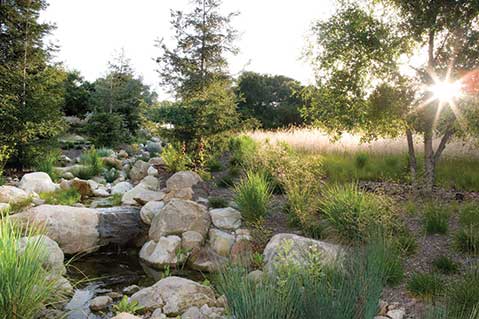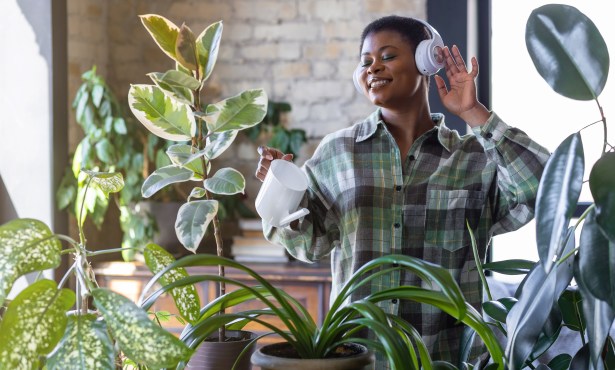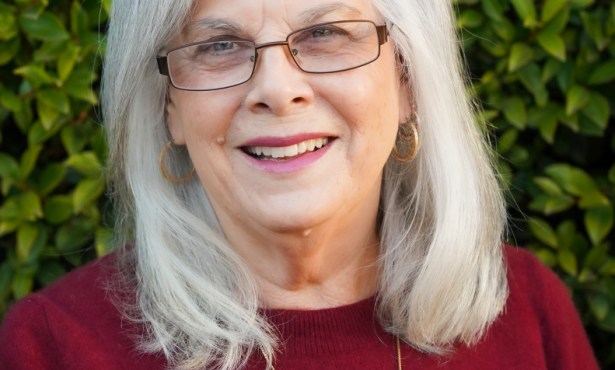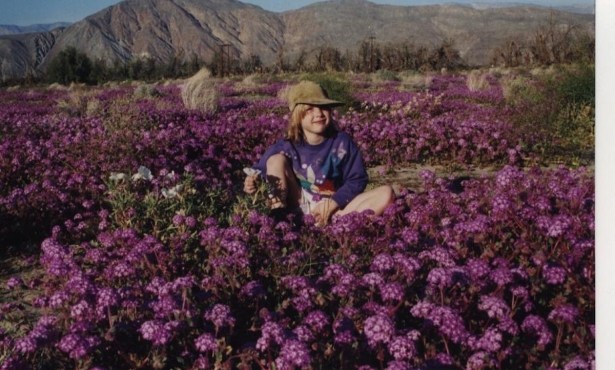Profiles in Design: Lane Goodkind
Landscape Designer’s Native-Plant Focus Brings California Back to Santa Barbara

Firm: 658 S. San Marcos Rd., lanegoodkind.com
Specialties: Landscape architecture, urban design, and bioswale design.
Notable Projects: 650-unit apartment complex in Los Angeles’ Koreatown. Cate School drainage system design. Public and residential native-California landscaping.
“A lot of the time, people don’t see the value in landscaping, and it’s a shame,” says Lane Goodkind. “Because there’s a lot to be said for injecting nature into every component of our lives.” He recognizes that architecture often takes center stage in public and private space. “Architects can be so dominant that oftentimes what makes people feel comfortable is left by the wayside,” he explains.
Goodkind also points out that over the years California coastal cities have become increasingly homogenized and less recognizable for their individual traits as design plans continue to rely heavily on similar building materials and easy-to-manage landscaping plants. “I try to always instill some sort of regional character so that people know that they are in Santa Barbara and feel that something about the plants really belongs,” he says, while explaining the many opportunities diverse coastal microclimates provide for designing striking original landscapes.
In his many successful residential projects, Goodkind has capitalized on Santa Barbara’s natural diversity by emulating native regional landscapes. One of his favorites is the California oak savanna. “It’s a very ephemeral, ethereal landscape that is in trouble,” he says. He also favors California native grasslands and recently completed a project on the California Riviera where he re-created a purple needle grass meadow.
Goodkind first got his feet wet in landscaping by pioneering the design practices of bioswales aimed to manage storm water — before it became federally mandated to treat impervious surface runoff. Now that the laws have changed, this has become more the work of civil engineers, not designers. “It’s a good thing that we are now treating the water and we’re mitigating a lot of the impacts of development on the watersheds,” he says. “But we’re not really solving the problem via design.”
Goodkind was able to integrate water-management engineering and design sensibilities in his project at Carpinteria’s Cate School, where he replaced an existing concrete drainage ditch with a bioswale planted with native trees and riparian plants.
Goodkind is currently working on a 650-unit apartment complex built in the early 1960s in Los Angeles’ Koreatown. “I feel good about it not really being gentrification,” he says of the complex, which has 50 years of deferred maintenance that leaves it up to him to update the landscaping, pools, and playgrounds. “It’s really just rehabbing the neighborhood for people, and I kind of like that inner-city rehabilitation aspect to it.”
He hopes to bring his environmental sentiment to redesigning complexes’ family areas and has done several park projects, including the redesign of Little Acorn Park in Isla Vista. “With every playground I do, I try to solve the nature deficit disorder issue with the inner-city kids these days,” says Goodkind, who attempts to eschew plastic and metal in play spaces. “I bring in real wood and plant trees where I can.”



